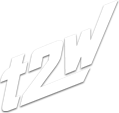LukeArdenCo
Junior member
- Messages
- 30
- Likes
- 0
Hey TTW community,
Want to share something that's been a game-changer for my trading: learning to distinguish between genuine trading opportunities and psychological impulses masquerading as setups.
We've all been there - watching a stock break resistance, heart racing, finger hovering over the buy button. Everything screams "NOW!" But here's the thing: sometimes that urgency comes from our emotions, not from actual market opportunity.
Real edge-based opportunities:
Psychological impulses:
When you feel that urgent need to enter a trade immediately, force yourself to:
If the opportunity still looks solid after 5 minutes, it's probably genuine. If it feels less compelling, it was likely impulse-driven.
Started tracking my own patterns and found:
Been implementing this for 3 months:
The math is pretty clear - slowing down improves results.
Would love to hear how others handle the psychology of entry timing. This stuff seems simple but makes a huge difference in practice.
For those interested in diving deeper into trading psychology implementation, I've been following along with this comprehensive approach
The psychological side of trading is where most of us leave money on the table. Small changes in awareness can create big improvements in consistency.
What's your experience with impulse vs. edge-based trading?
Want to share something that's been a game-changer for my trading: learning to distinguish between genuine trading opportunities and psychological impulses masquerading as setups.
The Core Problem
We've all been there - watching a stock break resistance, heart racing, finger hovering over the buy button. Everything screams "NOW!" But here's the thing: sometimes that urgency comes from our emotions, not from actual market opportunity.
Real edge-based opportunities:
- Meet your predetermined criteria regardless of how you're feeling
- Remain valid under calm, objective analysis
- Align with your systematic approach
Psychological impulses:
- Feel urgent and compelling but come from internal emotional states
- Often triggered by recent wins/losses or FOMO
- Create narrative about why "this time is different"
The Game-Changing Technique: The 5-Minute Rule
When you feel that urgent need to enter a trade immediately, force yourself to:
- Step away from screens (break the visual fixation)
- Take 5 deep breaths (calm the nervous system)
- Write down 3 reasons why you want this trade
- Check your actual criteria - does this really qualify?
- Ask yourself: "Would I take this if reviewing it tomorrow?"
If the opportunity still looks solid after 5 minutes, it's probably genuine. If it feels less compelling, it was likely impulse-driven.
Personal Impulse Profile
Started tracking my own patterns and found:
- I'm most impulsive between 10-11 AM (market energy gets me wired)
- After small losses, I want to "get it back" immediately
- Breakout patterns bypass my analytical brain more than other setups
- When I'm physically tense, decision quality drops significantly
Results So Far
Been implementing this for 3 months:
- 73% of "urgent" trades felt less compelling after the cooling-off period
- My win rate on trades that passed the 5-minute test: 64%
- Win rate on impulse trades I tracked (but didn't take): 31%
- Overall monthly volatility of returns decreased by 40%
The math is pretty clear - slowing down improves results.
Questions for Discussion
- What are your biggest impulse triggers? Time of day? Market conditions? Emotional states?
- Anyone else use cooling-off periods? What timeframe works for you?
- How do you handle FOMO when stepping away from "obvious" opportunities?
- What physical signs tell you that you're in impulse mode vs. analytical mode?
Would love to hear how others handle the psychology of entry timing. This stuff seems simple but makes a huge difference in practice.
For those interested in diving deeper into trading psychology implementation, I've been following along with this comprehensive approach
The psychological side of trading is where most of us leave money on the table. Small changes in awareness can create big improvements in consistency.
What's your experience with impulse vs. edge-based trading?
